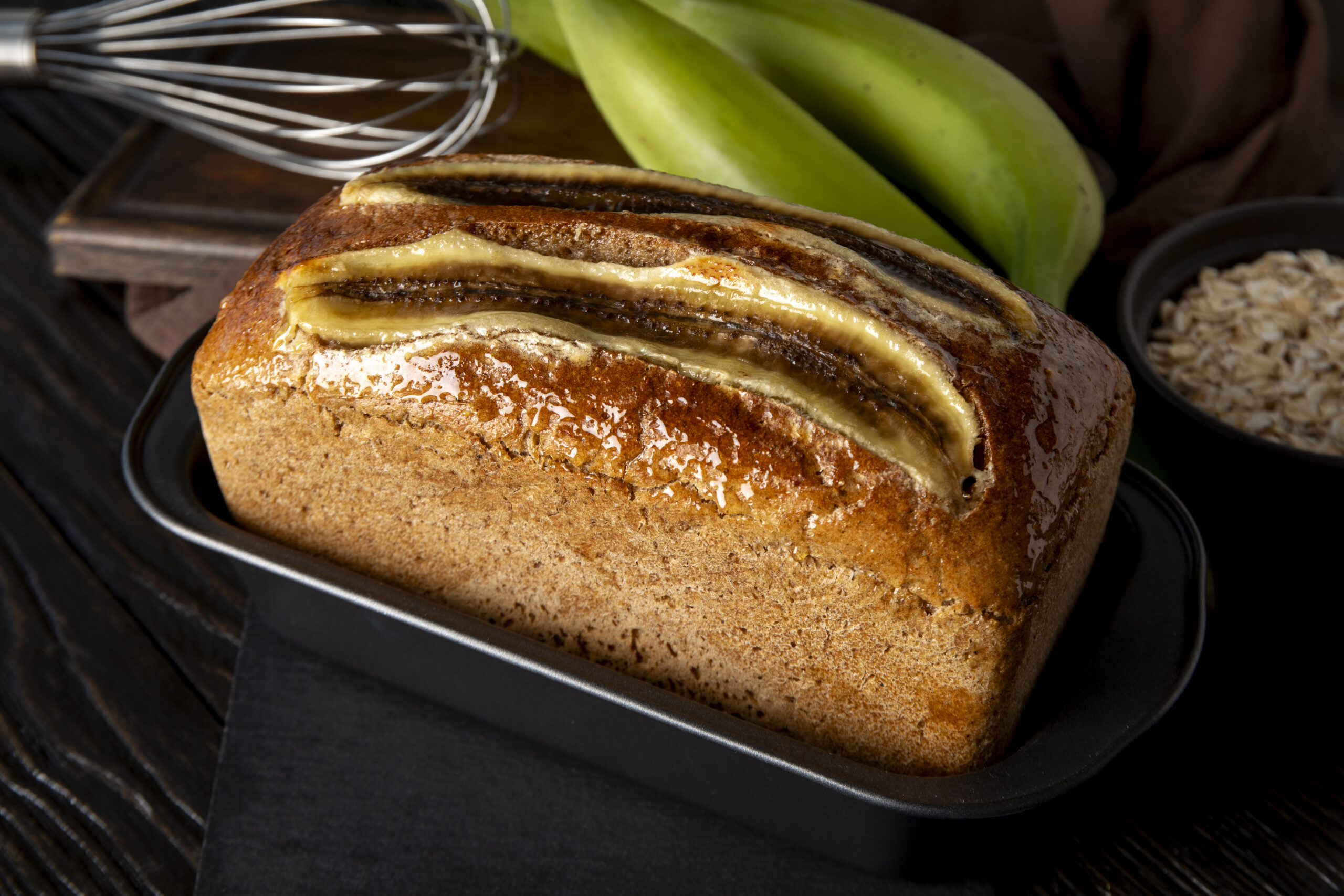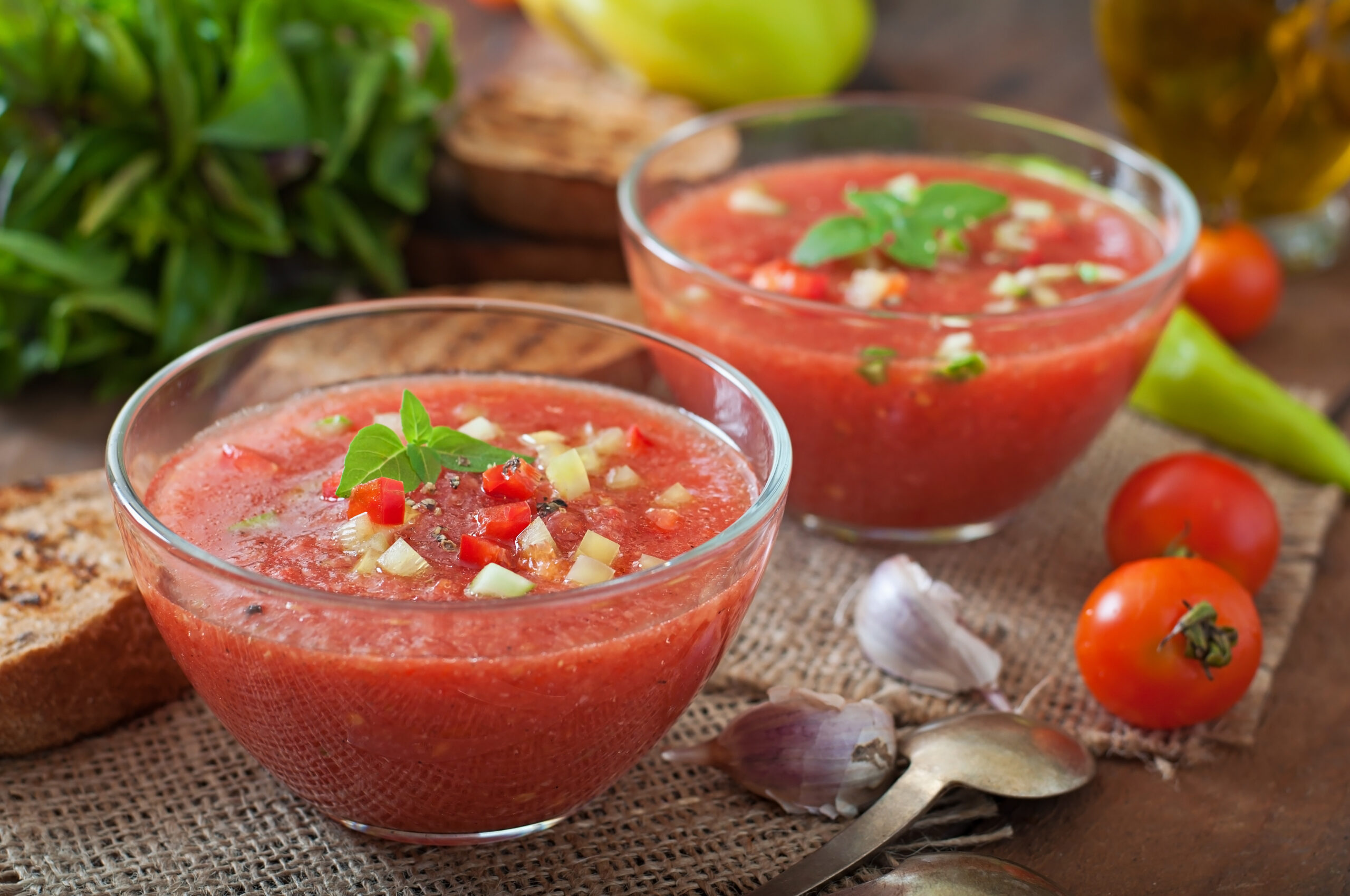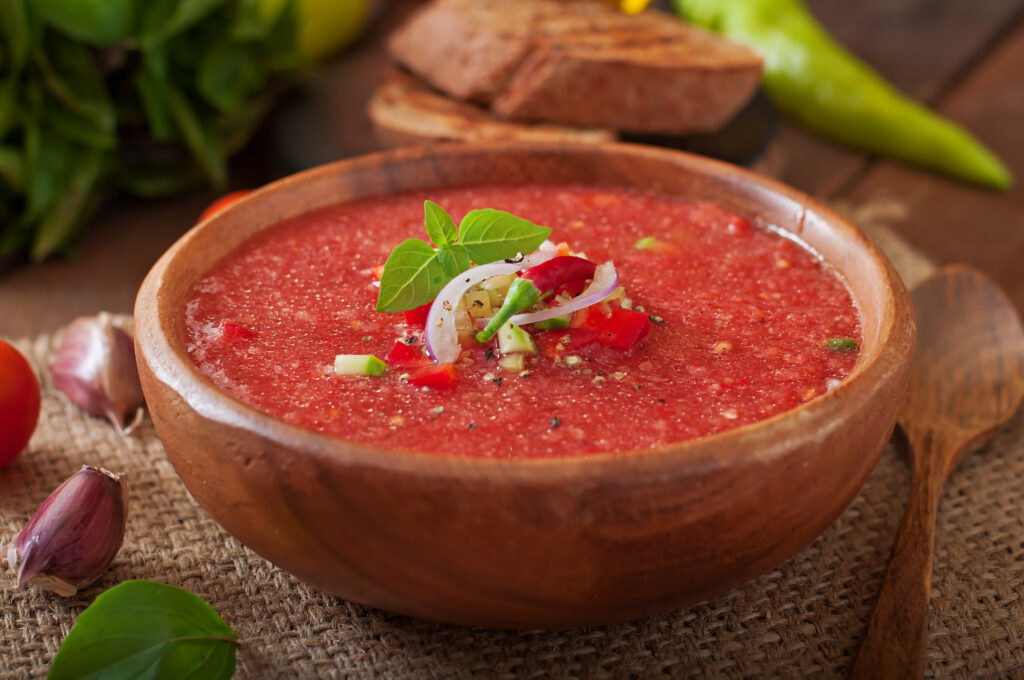- LIFE
How to Make Banana Bread Like a Pro


Gazpacho, a refreshing cold soup originating from Spain, is a culinary delight that marries the vibrant flavors of fresh vegetables into a harmonious blend. Perfect for hot summer days, this dish not only quenches the thirst but also satisfies the palate with its rich, tangy taste. Whether you’re a seasoned chef or a home cook, learning how to make gazpacho can add a versatile dish to your repertoire, offering a nutritious and flavorful option that can be personalized to any taste.
The foundation of a classic gazpacho lies in its fresh, high-quality ingredients. The traditional recipe calls for ripe tomatoes, cucumbers, bell peppers, onions, garlic, olive oil, vinegar, and stale bread. Each component plays a crucial role in achieving the desired flavor and texture.

Creating a classic tomato gazpacho is a straightforward process that involves blending fresh ingredients to achieve a smooth, flavorful soup. Here’s a step-by-step guide to help you master this dish.
Start by washing all the vegetables thoroughly. Peel the cucumbers and tomatoes if desired for a smoother texture. Chop the tomatoes, cucumbers, bell peppers, and onions into chunks.
In a blender, combine the tomatoes, cucumbers, bell peppers, onions, and garlic. Add a splash of sherry vinegar and a generous drizzle of olive oil. Blend until smooth. If the mixture is too thick, add a bit of cold water to reach your preferred consistency.
Soak the stale bread in water until soft, then squeeze out excess water. Add the bread to the blender and blend again until fully incorporated. This will help thicken the gazpacho.
Taste the gazpacho and adjust the seasoning with salt, pepper, and additional vinegar if needed. Blend once more to ensure all flavors are well combined.
Olive oil and sherry vinegar are more than just ingredients; they are essential flavor enhancers in gazpacho. The olive oil provides a rich, fruity aroma and a smooth texture, while the sherry vinegar adds a sharp, tangy note that balances the sweetness of the tomatoes.
While the classic gazpacho is a staple, there are numerous variations that allow you to experiment and create personalized versions of this beloved soup. Here are some ideas:
Replace tomatoes with green vegetables like spinach, kale, and green bell peppers. Add avocado for creaminess and lime juice for a zesty twist.
Incorporate fruits like watermelon or strawberries for a sweet contrast. These pair well with the acidity of the vinegar and the richness of the olive oil.
Add jalapeños or a dash of hot sauce for heat. This variation is perfect for those who enjoy a spicy kick.
For those short on time, gazpacho can still be a quick and easy meal option. Here are some tips for preparing a speedy version without compromising on flavor.
Use pre-chopped vegetables or canned tomatoes to cut down on prep time. These can be found in most grocery stores and are a convenient alternative.
Invest in a high-speed blender to achieve a smooth consistency in minutes. This appliance is a game-changer for preparing gazpacho quickly.
Even experienced cooks can make mistakes when preparing gazpacho. Here are some common pitfalls and how to avoid them.
Blending the soup for too long can result in a frothy texture. Blend just until smooth, and use a fine-mesh strainer if needed to remove excess foam.
Gazpacho relies heavily on seasoning. Taste frequently and adjust salt, pepper, and vinegar to ensure a balanced flavor profile.
Gazpacho is versatile enough to be served as an appetizer, main course, or side dish. Here are some pairing ideas to complement your gazpacho.
Serve gazpacho alongside grilled chicken or fish for a light, refreshing meal.
Offer gazpacho as a first course before a hearty paella or other Spanish-inspired dishes.
Proper storage is key to maintaining the freshness and flavor of gazpacho. Here’s how to store and freeze it effectively.
Store gazpacho in an airtight container in the refrigerator for up to three days. Stir well before serving as ingredients may settle.
Gazpacho can be frozen for up to three months. Freeze in individual portions for easy thawing. Thaw in the refrigerator and blend briefly to restore texture before serving.
Gazpacho is not only delicious but also packed with nutrients. Here’s a breakdown of the health benefits of its key ingredients:
Elevate your gazpacho with garnishes that add texture and visual appeal. Here are some ideas for garnishes and side accompaniments:
Top with finely chopped cucumbers, bell peppers, or onions for added crunch.
Fresh basil or cilantro can provide a fragrant finish.
Gazpacho can be easily customized to suit personal tastes. Here are some tips for making it your own:
Balance the acidity by experimenting with different vinegar types or adding citrus juice.
Incorporate proteins like shrimp or hard-boiled eggs for a more filling meal.
Throughout Spain, gazpacho takes on different forms, reflecting local ingredients and traditions. Here are a few regional variations:
A thicker version from Córdoba, made with more bread and often garnished with ham and boiled eggs.
A white gazpacho from Andalusia, made with almonds, garlic, and grapes.
Gazpacho’s flavor improves as it chills, allowing the ingredients to meld together. The acidity of the vinegar helps to preserve the soup, while the fats from the olive oil act as a carrier for the flavors, enhancing the overall taste.
The texture of gazpacho can vary from smooth to chunky, depending on personal preference. Here are some tips for achieving your desired texture:
Blend the soup thoroughly and strain it through a fine-mesh sieve to remove any solids.
Pulse the ingredients briefly in the blender, leaving small pieces intact for a heartier texture